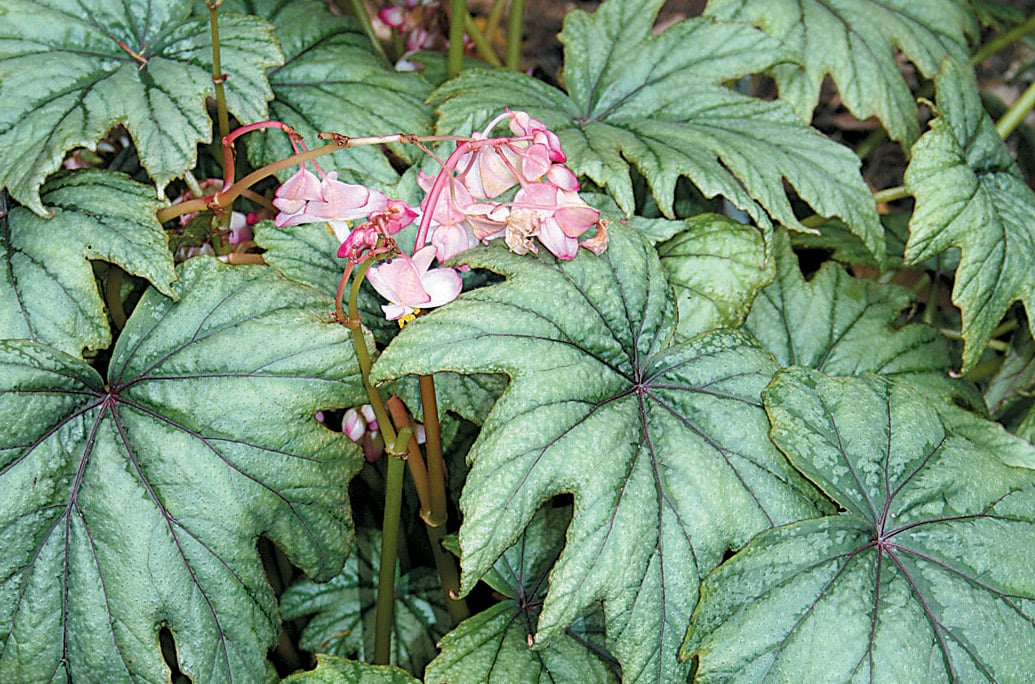

Contributor
- Topics: Archive, Plants You Need
Begonia grandis ‘Heron’s Pirouette’ in the tuberous group. Photographs by Tony Avent, except as noted
In my younger days, I considered begonias to be plants that only my grandmother fussed over. I did find them attractive, but they never really sparked any botanical interest. They evoked images of old ladies sewing quilts and fawning over these frilly little plants. What a misconception—not only of elderly women, but also of the genus Begonia, many of whose members are strong and durable, delightful in their variety, and quite at home outdoors in areas that had traditionally been considered inhospitable. Their memorable attributes today are the result of more than a century of hybridization and selection—good breeding, you might say. Lately, I've been experimenting with some of the newer, hardier selections of begonia in my Sacramento garden (USDA zone 9, Sunset zone 14).
The American Begonia Society has broken down Begonia into several horticultural categories. While not based on clear scientific criteria, the categories do make it easier to separate the plants according to similar growth habits and cultu...
READ THE WHOLE STORY
Join now to access new headline articles, archives back to 1977, and so much more.
Enjoy this article for FREE:
Articles: Calochortophilia: A Californian’s Love Affair with a Genus by Katherine Renz
If you are already a member, please log in using the form below.
Share:
Social Media
Garden Futurist Podcast
Most Popular
Videos
Topics
Related Posts

Low Maintenance Gardens – Better for Pollinators and People
Autumn 2022 “I come out every day. It’s therapy, my meditation.” Janet’s young garden transformed from overgrown, invasive plants to mostly natives. The dailiness of

Calochortophilia: A Californian’s Love Affair with a Genus
Summer 2022 I can chart the progression of my life by Calochortus. For the last two decades, at least. As a teenage girl growing up

Pacific Plant People: Carol Bornstein
Spring 2022 Public gardens play a key role in demonstrating naturalistic planting design, selecting native and adapted plants for habitat, and testing techniques for reducing

Add Year-Round Interest and Winter Blooms for Pollinators
Spring 2022 This article was created from an Interview by Merrill Jensen with Neil Bell in the Summer of 2021 for our Pacific Plant People










